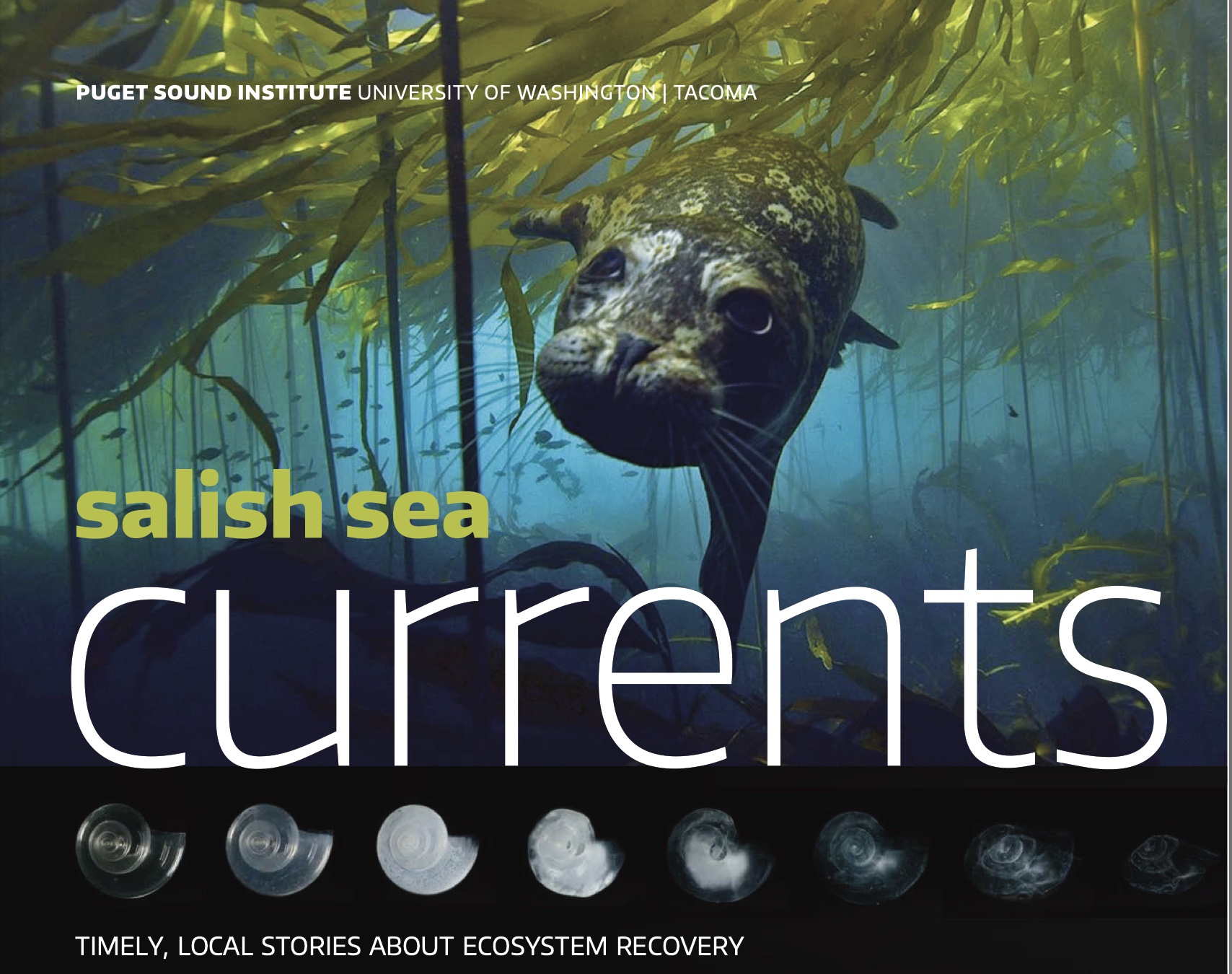FEATURED
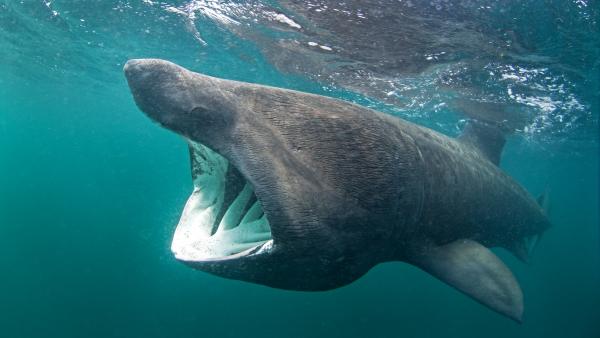
Will these gentle giants return to the Salish Sea?
A shark species the length of a bus was once common in the Salish Sea. Then it was labeled a "destructive pest" and nearly wiped out. Can the gentle and often misunderstood basking shark make a comeback?
TOPICS
- Action Agenda
- Adaptive management
- Algae
- Amphibians
- Aquatic reserves
- B-IBI
- Bald eagles
- Ballard Locks
- Biennial Science Work Plan
- Biofilm
- Birds
- Bivalves
- Circulation
- Climate change
- Contaminants of emerging concern
- Counties
- Disease
- Dungeness crabs
- Ecoregions
- Ecosystem-based management
- Ecosystem services
- Eelgrass
- Elwha River
- Environmental justice
- Estuarine habitat
- Eyes Over Puget Sound
- Eyes Under Puget Sound
- Fishes
- Floodplains
- Food web
- Forage fish
- Freshwater habitat
- Geography
- Green crabs
- Harbor porpoise
- Harbor seals
- Harmful algal blooms
- Healthy human population
- Herring
- History
- Human quality of life
- Hypoxia
- Implementation Strategies
- Invasive species
- Invertebrates
- Jellyfish
- Kelp
- Killer whales
- Land cover conversion
- Mammals
- Marine birds
- Marine debris
- Marine habitat
- Marine heat waves
- Marine Protected Areas
- Marine Waters Overview
- Modeling
- Monitoring
- National Estuary Program
- Nearshore habitat
- Noise
- Nutrient pollution
- Ocean acidification
- Oil spills
- Persistent contaminants
- Physical environment
- Phytoplankton
- Plants
- Puget Sound boundaries
- Puget Sound Fact Book
- Puget Sound Pressures Assessment
- Puget Sound Update
- Reptiles
- Resilience
- Rockfish
- Salish Sea
- Salish Sea Currents magazine
- Salish Sea Ecosystem Conference
- Salmonids
- Sea-star wasting disease
- Sea level rise
- Sewage and fecal pollution
- Shellfish
- Shoreline armoring
- Social science
- Species and food webs
- Species of concern
- State of the Sound
- Stormwater
- Summer stream flows
- Terrestrial habitat
- Tidal energy
- Toxic contaminants
- Traditional ecological knowledge
- Tribes
- Uncertainties
- Vital Signs
- Water quality
- Water quantity
- Water Resource Inventory Areas (WRIA)
- Watershed hydrologic unit codes (HUC)
- Watersheds
- Zooplankton
RECENT ARTICLES
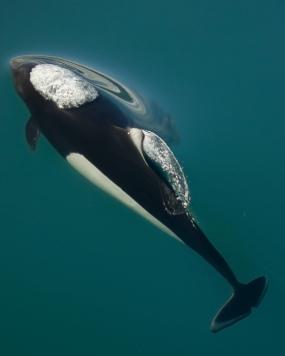
The decline of Dall’s porpoise in the Salish Sea
Dall’s porpoises have declined in the Salish Sea since the early 1990s for reasons that are unknown. However, the species, which remains abundant in inshore waters of Alaska and in open coastal and offshore waters of the North Pacific Ocean, is not considered threatened or endangered. Major threats to Dall’s porpoise populations include direct hunting, by-catch in fisheries, and the impacts of environmental contaminants.
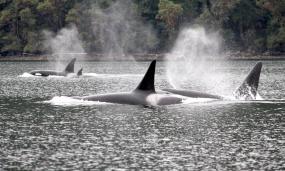
Under a new proposal, our local orcas — resident and Bigg’s killer whales — would each become a new species
A scientific paper, published on March 27th, spells out the unique physical and genetic characteristics that should make each group a separate species, with the proposed scientific names Orcinus ater for residents and Orcinus rectipinnus for Bigg’s.
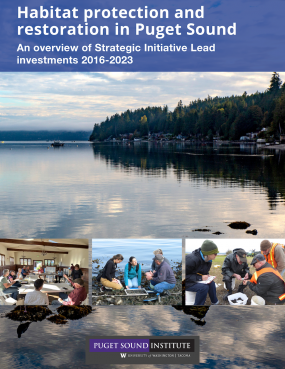
Habitat protection and restoration in Puget Sound: An overview of Strategic Initiative Lead investments 2016-2023
Between 2016 and 2021, $21 million provided by the Environmental Protection Agency (EPA) funded 100 different projects to protect, restore, and study critical habitats in Puget Sound. This publication presents an overview of many of the key accomplishments and lessons learned from these efforts. It is a catalog of some of the ‘big ideas’ presented by the scientists and conservationists involved, and it is meant to inform and guide future Puget Sound recovery efforts. This overview is based on the full synthesis report, “Synthesis of Habitat Strategic Initiative Lead 1.0 2016-2023 Investments for Puget Sound Recovery," published by the Puget Sound Institute.
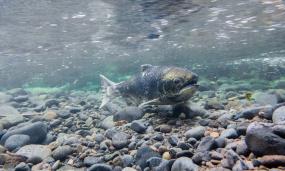
The words ‘in common with’ were pivotal to Judge Boldt’s ruling on Native American fishing rights
Three common words and their legal interpretation a half-century ago helped set the stage for a cultural revival among Native Americans while propelling an environmental movement that still resonates today. Environmental reporter Christopher Dunagan revisits the legal reasoning behind the famous Boldt decision that upheld tribal fishing rights in the state of Washington.
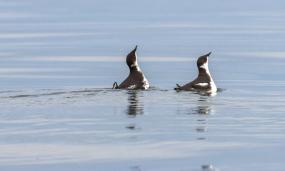
Science notebook: Winter studies of Puget Sound's threatened marbled murrelets
For years now, scientists have been braving the cold winter waters of Puget Sound to study one of the region's most enigmatic seabirds, the marbled murrelet. Listed as threatened under the Endangered Species Act in Washington, Oregon, and California, marbled murrelets nest in old-growth forests but find their food at sea. Much research on the birds has centered around the spring and summer breeding season, but less is known about what the murrelets do in winter. That puzzle prompted a team of scientists from the Washington Department of Fish and Wildlife to head out on the water last January. Writer and biologist Eric Wagner joined the expedition and brought back these notes from the field.
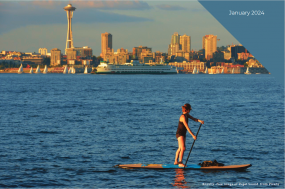
Puget Sound perceptions of environmental and climate change
About 80% of respondents to a 2022 human wellbeing survey reported some level of concern for environmental impacts affecting Puget Sound. The survey was funded by the Puget Sound Partnership and led by members in Oregon State University’s Human Dimensions Lab.
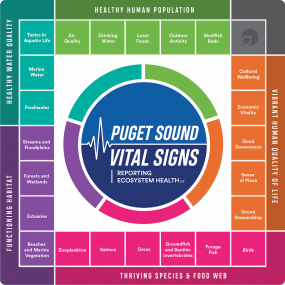
Summary report of 2022 human wellbeing Vital Signs survey
This report presents results of the 2022 survey to monitor the human wellbeing Vital Signs prepared for the Puget Sound Partnership by Oregon State University.
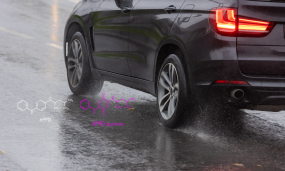
Lawsuits fly, as regulators come to grips with a toxic tire chemical
Finding a replacement for 6PPD in tires is one major challenge; another is to prevent the highly toxic derivative 6PPD-Q from reaching salmon streams and killing fish.
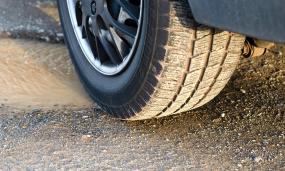
Scientists worldwide are immersed in studies of a deadly tire chemical
Research that began in Puget Sound has revealed much about the cellular-level assault on vulnerable salmon and trout, yet the puzzle remains incomplete.
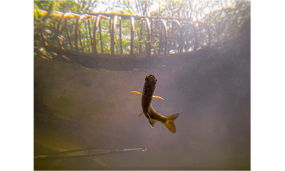
Photographing the 'Creek of Hope'
Longfellow Creek near West Seattle's industrial district still draws spawning salmon despite a century of city development and an onslaught of toxic chemicals. A current exhibit by photographer Tom Reese explores this often-overlooked gem of urban nature.
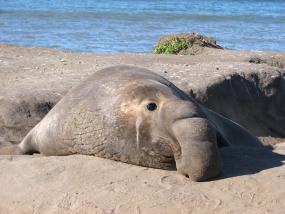
Northern elephant seals in Puget Sound and vicinity
Northern elephant seals were hunted heavily in the 19th century and believed to be extinct by 1892. However, a small remnant population (~50–100 animals) off the western coast of Mexico grew to populations in the United States and Mexico to at least 220,000 individuals as of 2010. Elephant seals are distributed in the central and eastern North Pacific Ocean, from as far north as Alaska down to southern Baja California. Sightings of elephant seals were once considered rare in the Salish Sea, but increasingly single individuals are known to haul out onto sandy beaches on Smith, Protection, and Whidbey Islands. In 2010, a local breeding population established itself along the lower west side of Whidbey Island in Puget Sound.
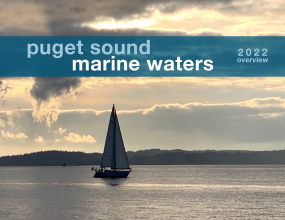
Puget Sound Marine Waters 2022 Overview
Each year, the Puget Sound Ecosystem Monitoring Program releases the annual Puget Sound Marine Waters Overview report. The latest report combines a wealth of data from comprehensive monitoring programs and provides a concise summary of what was happening in Puget Sound’s marine waters during 2022. The report represents the collective effort of 84 contributors from federal, tribal, state, and local agencies, academia, nonprofits, and private and volunteer groups.
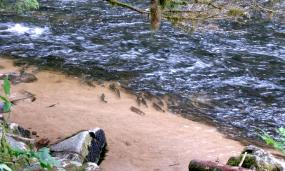
Surging numbers of pink salmon raise ecological concerns
An estimated 70% of all the salmon in the North Pacific are pink salmon. Scientists say the extreme abundance of pinks could be causing a "trophic cascade" that is harming species across the food web.
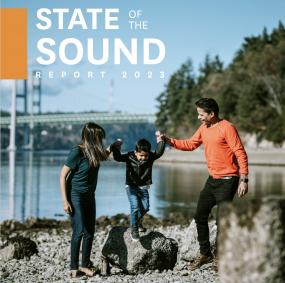
State of the Sound report 2023
The 2023 State of the Sound is the Puget Sound Partnership’s eighth biennial report to the Legislature on progress toward the recovery of Puget Sound. The document reports on both the status of the Partnership's recovery efforts and a suite of ecosystem indicators referred to as the Puget Sound Vital Signs.
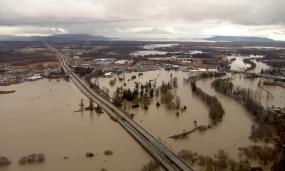
Studies target increasing flood risks
All across the region, communities are finding that rising seas and rising rivers are two sides of the same coin. New research funded by the Environmental Protection Agency may help managers target their responses to climate-fueled flood risks in Puget Sound. The following article was commissioned by the Habitat Strategic Initiative Lead (HSIL), a cross-agency team co-led by the Washington Departments of Fish and Wildlife and Natural Resources.
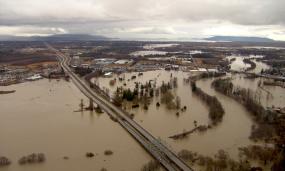
多項研究以日趨升高的洪水風險為目標
本區域各地的社區發現,海平面上升和河水上漲是一體兩面的問題。氣候變遷使得Puget 海灣面臨愈來愈高的洪水風險,環境保護局贊助的新研究可能有助於主管機關找出因應之道。
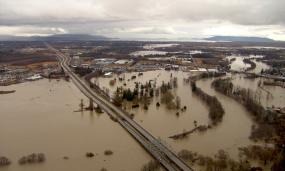
Những nghiên cứu nhắm đến các rủi ro ngày một nhiều về lũ lụt
Trên toàn khu vực, các cộng đồng đang nhận thấy rằng tình trạng mực nước biển và mực nước sông dâng lên có mối liên hệ chặt chẽ. Nghiên cứu mới do Environmental Protection Agency (Cơ Quan Bảo Vệ Môi Sinh) tài trợ có thể giúp các nhà quản lý hướng các biện pháp ứng phó của họ vào các rủi ro lũ lụt do khí hậu tại Puget Sound.
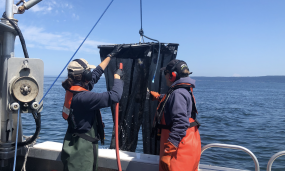
The ups and downs of zooplankton in Puget Sound
Zooplankton are critical to the marine food web, but until recently there have been few surveys of the zooplankton community in Puget Sound. Ongoing monitoring is now revealing a system full of complexity and surprises. The following article was commissioned by the Habitat Strategic Initiative Lead (HSIL), a cross-agency team co-led by the Washington Departments of Fish and Wildlife and Natural Resources.
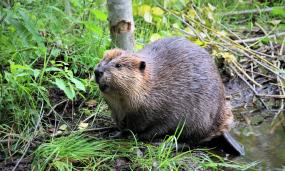
Program seeks alternatives to beaver dam removals
Beavers provide critical benefits for wetland ecosystems but can also alter the landscape in ways that are unpredictable for property owners and conservationists alike. New techniques are helping humans and beavers share the landscape with the goal of benefiting both parties. The following article was commissioned by the Habitat Strategic Initiative Lead (HSIL), a cross-agency team co-led by the Washington Departments of Fish and Wildlife and Natural Resources.

Los estudios señalan el aumento del riesgo de inundaciones
En toda la región, las comunidades están descubriendo que el aumento del nivel del mar y los ríos son dos caras de la misma moneda. Una nueva investigación financiada por la Agencia de Protección Ambiental puede ayudar a los administradores a enfocar sus respuestas a los riesgos de inundaciones provocadas por el clima en el estrecho de Puget.
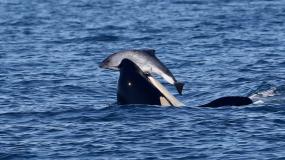
Southern resident orcas chase and sometimes kill porpoises. Why don’t they eat them?
Puzzling encounters between endangered killer whales and harbor porpoises point to questions about prey availability and whale culture, scientists say. Are the whales playing, practicing their hunting skills, or is something else going on?
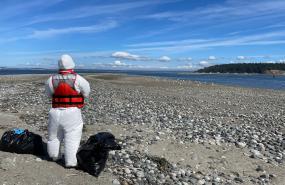
Avian flu comes to the Salish Sea
A new strain of avian flu has been sweeping the globe since 2020, leaving thousands of dead seabirds in its wake. This past summer, it arrived at a colony of Caspian terns at Rat Island in the Salish Sea, with catastrophic results.
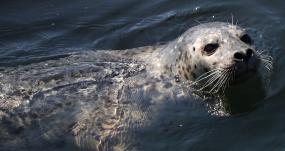
Status and trends for harbor seals in the Salish Sea
Harbor seals were hunted from the 1870s to 1970s until they were protected in the United States by the 1972 Marine Mammal Protection Act and in Canada under the 1970 Marine Mammal Regulations in the Fisheries Act. The inland Washington harbor seal stock is estimated to be over 12,000, while the Strait of Georgia sustains approximately 39,000 harbor seals. Key threats include human disturbance, habitat degradation, loss of prey, and interaction with fishing gear and boats.
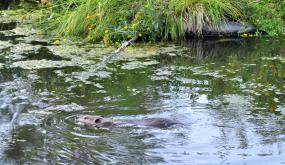
Can the age-old affinity between beavers and salmon be restored?
Salmon restoration groups are learning how to work with beavers to create better salmon habitat. The process hinges on reducing human-beaver conflicts while taking a natural approach to ecosystem recovery. The beavers are happy to help.
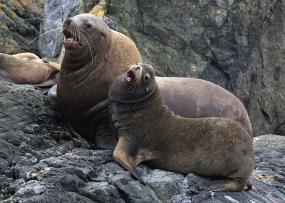
Steller sea lions in Puget Sound and vicinity
Steller sea lions use Puget Sound as a feeding area from autumn through spring when they are not breeding in British Columbia and Alaska during summer. While the Western Stock of the species is considered Endangered under the US Endangered Species Act (ESA), the Eastern Stock, which occurs in Puget Sound, is increasing in numbers and not listed under the ESA.
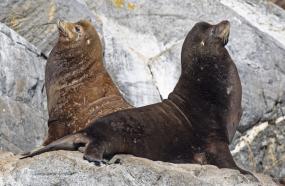
California sea lions in Puget Sound and vicinity
California sea lions have become common in Puget Sound in non-summer months. The overall trend for the population has been a dramatic increase in numbers since the species was protected in 1972. They are opportunistic feeders that often target herring and juvenile salmon and steelhead species in Puget Sound.
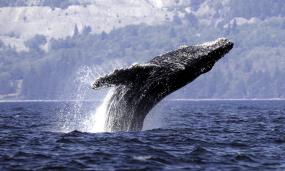
Humpback whales find their voice
The Salish Sea may be a giant ‘practice room’ for humpback whales as they get ready to sing in their winter breeding grounds in Hawaii and Mexico. A network of hydrophones is recording it all.
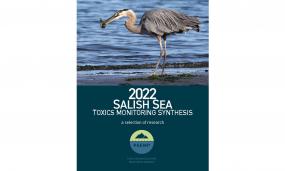
2022 Salish Sea toxics monitoring synthesis: A selection of research
A 2023 report from the Puget Sound Ecosystem Monitoring Program presents an overview of selected recent monitoring and research activities focused on toxic contaminants in the Salish Sea.
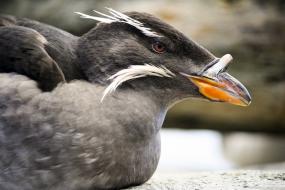
A tale of two islands
Were the islands half full of auklets or were they half empty? One scientist offers an insider's view of a newly published study of two Pacific seabird colonies. He says having good data for the paper was key, but finding the right title didn't hurt.

Dispatch from the last colony
Tufted puffins have become an increasingly rare sight in the Pacific Northwest. Biologist and writer Eric Wagner recently visited Puget Sound's Smith Island, home to one of the region's last surviving colonies of these colorful seabirds.

